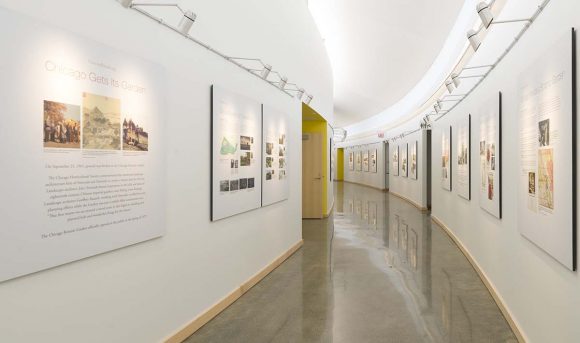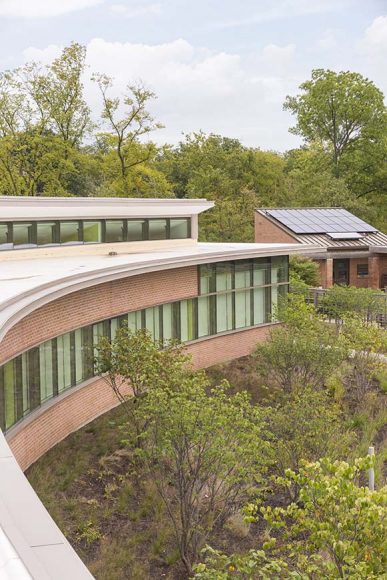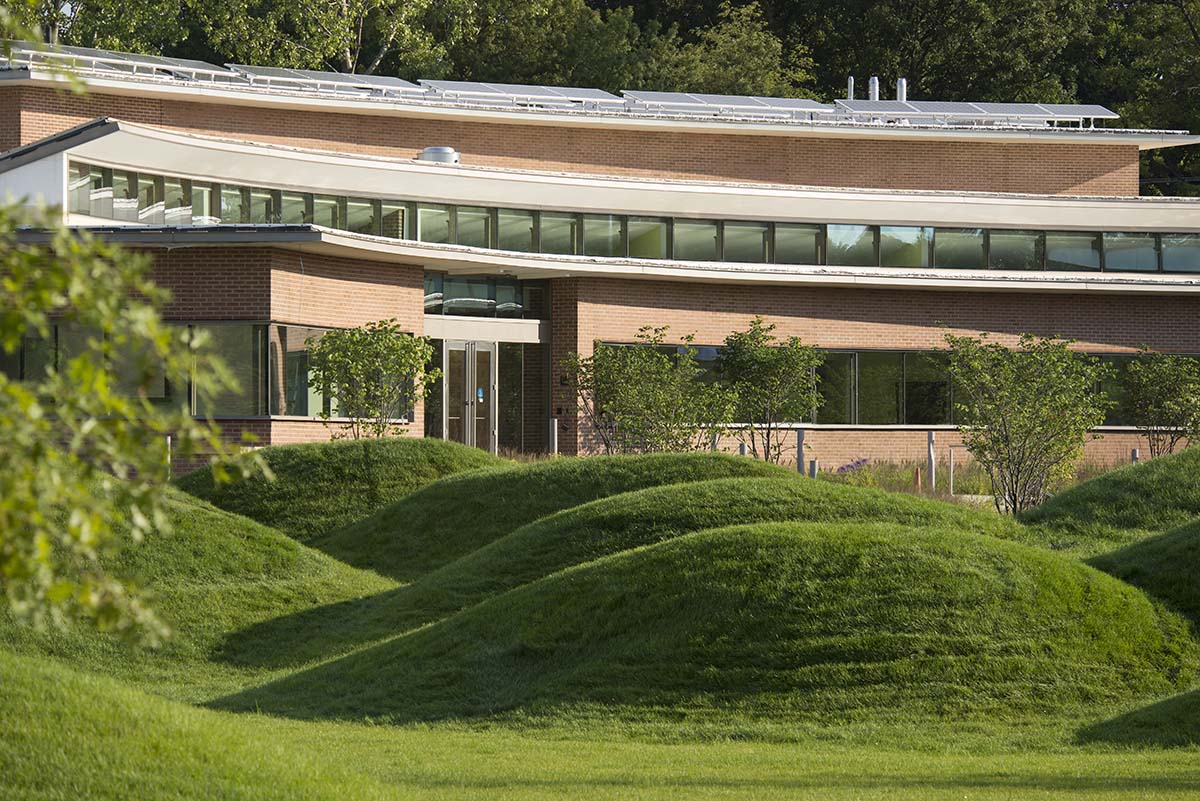We dreamed green, from the moment we started planning the Learning Center on the Regenstein Learning Campus—in every solar panel we placed, in every window we installed, in every cleaning product we used. Recently, the hard work brought us national recognition.
The Chicago Botanic Garden is pleased that the U.S. Green Building Council has awarded the top rating of Platinum LEED (Leadership in Energy and Environmental Design) to the Learning Center, which opened in September 2016. The designation means that the Garden is recognized as a leader in the green building movement. Of 51,875 projects in the United States that has earned LEED status since 2004, only 10.7 percent have been awarded platinum recognition.

Sustainability Features
People of all ages and abilities connect with the natural world in the programs, classes, and events through the Joseph Regenstein, Jr. School of the Chicago Botanic Garden, based at the Learning Center. In every single decision we made before opening the Center’s doors, we applied the same sustainability standards that we use for our gardens: How do we save water and energy? What is the best way to reduce our environmental footprint?

Here are some of the ways we did so, with the help of architects Booth Hansen & Associates and the Rocky Mountain Institute, which provided sustainability counsel. The Learning Center uses the following:
- A rainwater capture and storage system (the rainwater is used to water the Grunsfeld Children’s Growing Garden)
- 83 solar panels, which generate 16 percent of the building’s electricity
- Environmentally friendly cleaning products, and paints, adhesives, and sealings with low amounts of chemicals that could harm indoor air quality
- 90 percent natural daylight
- Special windows to deter bird collisions
Even outside the Learning Center, we made sure to think local and sustainable in the Nature Play Garden, with climbing boulders from Wisconsin and as many native plants as possible—not as part of the LEED certification, but as part of our environmental ethos.
“We are an organization that cares deeply about conservation and sustainability. When it comes to our buildings, we embrace energy-efficient construction practices that mitigate environmental impact,” said Jean M. Franczyk, the Garden’s president and CEO.
©2017 Chicago Botanic Garden and my.chicagobotanic.org

